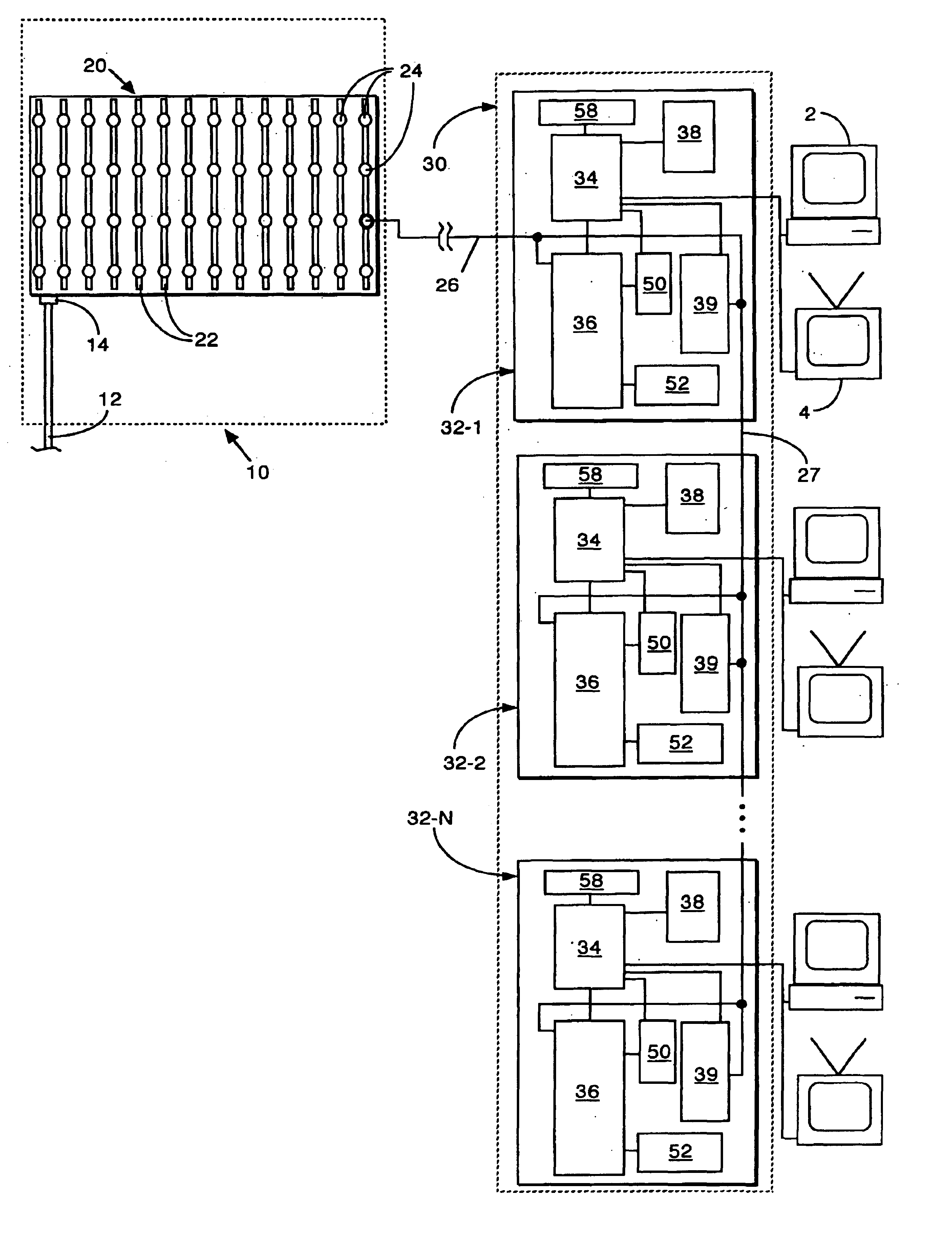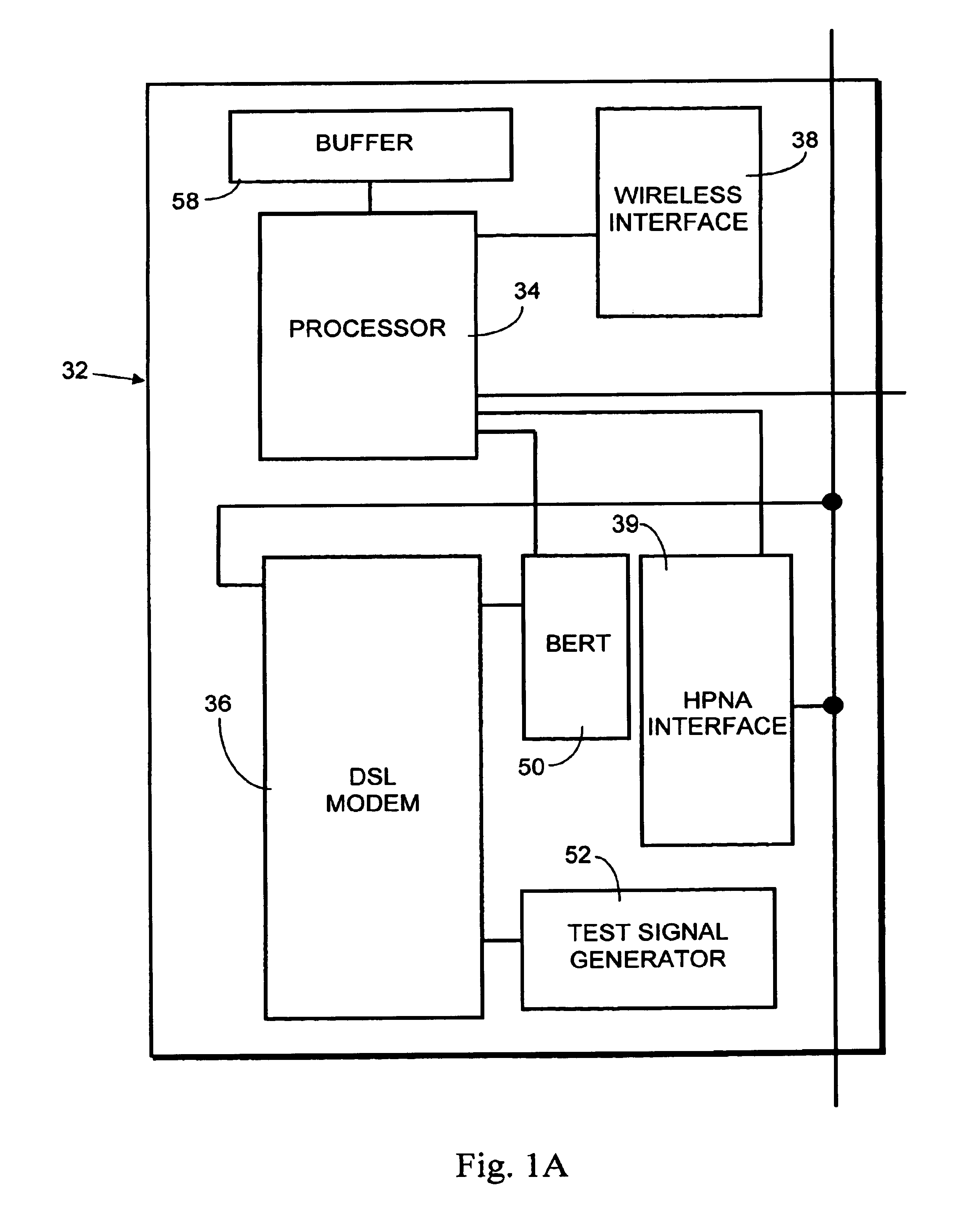Point to multi-point communications system
- Summary
- Abstract
- Description
- Claims
- Application Information
AI Technical Summary
Benefits of technology
Problems solved by technology
Method used
Image
Examples
Embodiment Construction
[0045]The system of the invention is illustrated in FIG. 1. The invention will be described in relation to a DSL communications system by way of example, however the invention is not intended to be limited to DSL communications and is applicable to other diplex communications systems.
[0046]A local telephone company central office 10 is equipped with DSL distribution equipment comprising a plurality of DSL racks 20, each containing a plurality of PCI cards 22 each supporting a plurality of DSL communications ports 24. A typical DSL rack 20 is provided with a communications input 12 coupled to a communications cable or fiber 14 supporting digital data transfer, for example at 200 Mbps. Each DSL port 24 is coupled to suitable communications circuitry (not shown) which is well known in the art, to allow digital data transfer at a rate set by the telephone company, for example 300 kbps. The digital data ports 24 are in turn coupled to subscribers through existing telephone cable, typical...
PUM
 Login to View More
Login to View More Abstract
Description
Claims
Application Information
 Login to View More
Login to View More - R&D
- Intellectual Property
- Life Sciences
- Materials
- Tech Scout
- Unparalleled Data Quality
- Higher Quality Content
- 60% Fewer Hallucinations
Browse by: Latest US Patents, China's latest patents, Technical Efficacy Thesaurus, Application Domain, Technology Topic, Popular Technical Reports.
© 2025 PatSnap. All rights reserved.Legal|Privacy policy|Modern Slavery Act Transparency Statement|Sitemap|About US| Contact US: help@patsnap.com



